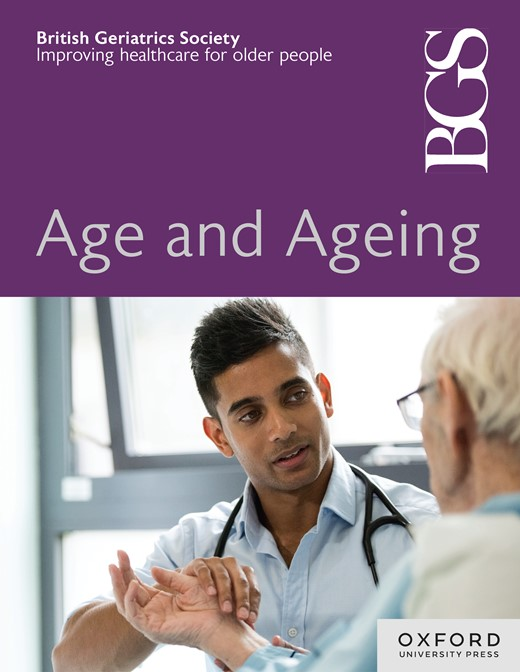心脏骤停患者的护理目标讨论
IF 6
2区 医学
Q1 GERIATRICS & GERONTOLOGY
引用次数: 0
摘要
背景 尽管复苏技术不断进步,但院内心脏骤停后的预后仍然很差。确立 "护理目标 "对于优化患者护理和避免对那些不太可能从复苏中获益的患者进行繁琐的干预至关重要。对于入院时被认为不可能发生心脏骤停的患者,医生往往避免与他们讨论 "护理目标"。方法 对我院内科和外科病房 2022 年 12 月至 2023 年 6 月期间所有非妊娠成人住院患者的心脏骤停小组启动情况进行前瞻性分析。对住院病历进行了定性分析,以评估心脏骤停的发生率、人口统计学和临床数据,以及就护理升级进行讨论的程度。结果 筛选出 66 次心脏骤停小组启动,并对其中 23 次呼叫进行了分析。心脏骤停的估计发生率为每 1,000 名出院患者中有 1.11-1.67 例。18 名患者(78.2%)在接到心跳骤停呼叫时正在接受普通内科或老年病科团队的治疗。12 名患者(52%)的年龄超过 70 岁,4 名患者(17%)的年龄超过 80 岁。在心脏骤停小组被启动的患者中,跌倒是最常见的入院原因(22.7%)。2 名确诊为心脏骤停的患者(12.5%)幸存出院。8/23 名患者(34.7%)的护理目标讨论记录在案。结论 在我院,心脏骤停并不常见。只有三分之一的病例记录了有关护理目标的讨论,这可能是因为许多患者出现的问题通常与后续骤停风险无关。鉴于出院后的存活率较低,对于所有不太可能从复苏中获益的患者,无论其主诉如何,都应在入院时考虑对护理目标进行常规讨论。本文章由计算机程序翻译,如有差异,请以英文原文为准。
Goals of Care Discussions Among Patients Who Suffer Cardiac Arrest
Background Outcomes following in-hospital cardiac arrest remain poor despite advances in resuscitation techniques. Establishing “goals of care” is crucial to optimizing patient care and avoiding burdensome interventions in those who are unlikely to benefit from resuscitation. Doctors often avoid discussions regarding ‘goals of care’ with patients in whom cardiac arrest is not deemed likely at the time of admission. Methods All cardiac arrest team activations for non-pregnant, adult inpatients on medical and surgical wards at our institution from December 2022 – June 2023 were prospectively analysed. Qualitative analysis of inpatient charts was performed to assess; incidence of cardiac arrest, demographic and clinical data, and the degree to which discussions regarding escalation of care had taken place. Results 66 cardiac arrest team activations were screened, of which 23 calls were included for analysis. The estimated incidence of cardiac arrest was 1.11-1.67 events per 1,000 patient discharges. 18 patients (78.2%) were under the care of general medicine or geriatric teams at the time of arrest call. 12 (52%) patients were older than 70 and 4 (17%) were older than 80. Falls were the most common reason for admission (22.7%) among patients for whom the cardiac arrest team was activated. 2 patients (12.5%) with confirmed cardiac arrest survived to hospital discharge. Discussions regarding goals of care were documented for 8/23 patients (34.7%). Conclusion Cardiac arrests were uncommon in our institution. Discussions regarding goals of care were documented in only a third of cases, possibly because many patients presented with issues not typically associated with a risk of subsequent arrest. Given the low survival rates to discharge, routine discussion of goals of care should be considered at the point of admission in all patients who are unlikely to benefit from resuscitation, regardless of the presenting complaint.
求助全文
通过发布文献求助,成功后即可免费获取论文全文。
去求助
来源期刊

Age and ageing
医学-老年医学
CiteScore
9.20
自引率
6.00%
发文量
796
审稿时长
4-8 weeks
期刊介绍:
Age and Ageing is an international journal publishing refereed original articles and commissioned reviews on geriatric medicine and gerontology. Its range includes research on ageing and clinical, epidemiological, and psychological aspects of later life.
 求助内容:
求助内容: 应助结果提醒方式:
应助结果提醒方式:


